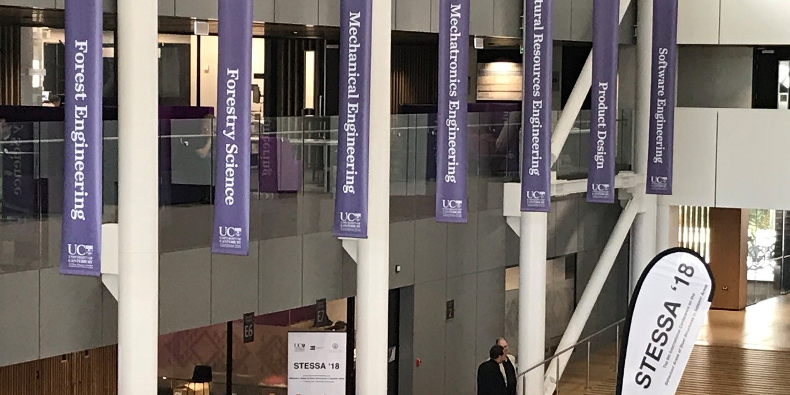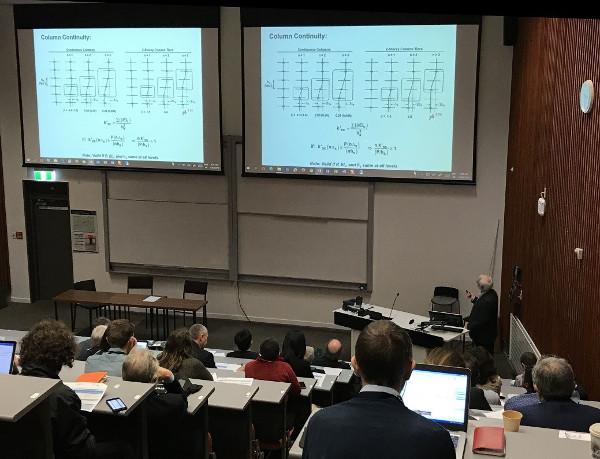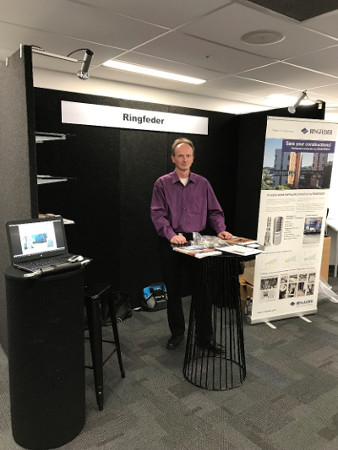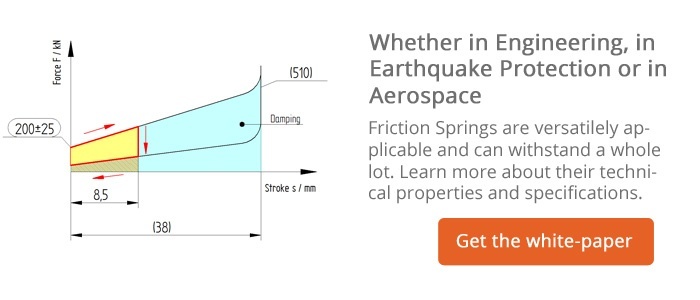Review: STESSA 2018, Christchurch (NZ)

The 9th International STESSA Conference on the Behaviour of Steel Structures in Seismic Areas took place from February 17 to 19 in Christchurch (New Zealand). This conference, which is triennially held, is organized by the Steel Construction New Zealand Incorporated (SCNZ) in cooperation with the University of Auckland, the University of Canterbury and the University of Naples. Like the previous STESSA Conferences, the University of Canterbury was selected to host this event.
Mission
STESSA's main mission is to provide a platform for local and international engineering experts in seismic design and involved with steel and steel-concrete composite structures to discuss the latest international developments and findings in seismic engineering.
SCNZ, co-organizer of STESSA, is advancing the interests of New Zealand’s structural steel industry through technical expertise, advice on latest steel design trends and standards, creating networking opportunities as well as promotion and facilitating business excellence. SCNZ currently has over 300 members nationwide.
Visitors & Topics
This year's conference attracted over 150 attendees from 20 countries who came to Christchurch to share and update their knowledge. Several keynote presentations focussed on learnings from the performance of structures following the Canterbury earthquakes were presented. Accordingly, the conference agenda covered topics like
- case studies,
- the adequacy of current standards,
- collapse behavior of steel structures,
- vulnerable structure assessment and retrofit,
- the development of new structures for improved seismic performance,
- post-earthquake assessment and repair.
Furthermore, the program of the Conference comprised plenary sessions, oral sessions, discussions and of course technical sessions.

Particular attention was also paid to the keynote papers – one example of this being the presentation of Stephen Hogg, Director of Aurecon New Zealand Ltd: He gave a speech about Seismically Resilient Building technology ("Discussion on resilient building technology applied in New Zealand since 2013"). In his speech, amongst others, RINGFEDER® Friction Springs were positively named as a resilient and reliable design technology – they damp and absorb induced kinetic energy at the same time.
Directly linked with the key research themes from the conference, also a technical tour was provided: A local field trip was organized to several key structures within Christchurch to showcase applications of innovative seismic designs.
RINGFEDER at STESSA
RINGFEDER POWER TRANSMISSION, first time participating as exhibitor at the STESSA Conference, presented their field-proven earthquake protection damping solutions based on RINGFEDER® Friction Springs to the sector experts.
 More than 40 professional visitors attended our booth to learn more about our earthquake protection solutions. Because there are already buildings existing in New Zealand which are equipped with RINGFEDER® Friction Springs as earthquake protection system:
More than 40 professional visitors attended our booth to learn more about our earthquake protection solutions. Because there are already buildings existing in New Zealand which are equipped with RINGFEDER® Friction Springs as earthquake protection system:
For example, the "Te Puni Village" Student Accommodation with 340 dwelling units (Wellington) as well as the "Tait Communication Campus" (Christchurch).
Te Puni Village was already completed when the earthquake on July 21st, 2013 occurred, measuring 6.5 on the Moment Magnitude Scale and the following aftershock measuring 5.8 on the MMS – the building withstood the earthquake without noteworthy damages.
Successful Conference
Professor Greg MacRae, University of Canterbury, commented: “STESSA 2018 successfully showcased New Zealands designs and construction. The research that was presented inspired practical discussions, enabled valuable information to be shared and facilitated the development of important connections amongst specialists; all of which will help us as we seek to make better seismic systems made of steel in New Zealand.”
To sum up, it can be concluded that the great interest of the local experts and international attendants in the STESSA Conference 2018 has shown, that STESSA is an important forum for the exchange of scientific and practical information with view to steel structures in earthquake protection. Seismic engineering will – also internationally seen – play an increasing role in the future. Thus, we are already excited about the fresh insights and latest technologies which will be presented and discussed at the next STESSA Conference 2021.


Comment